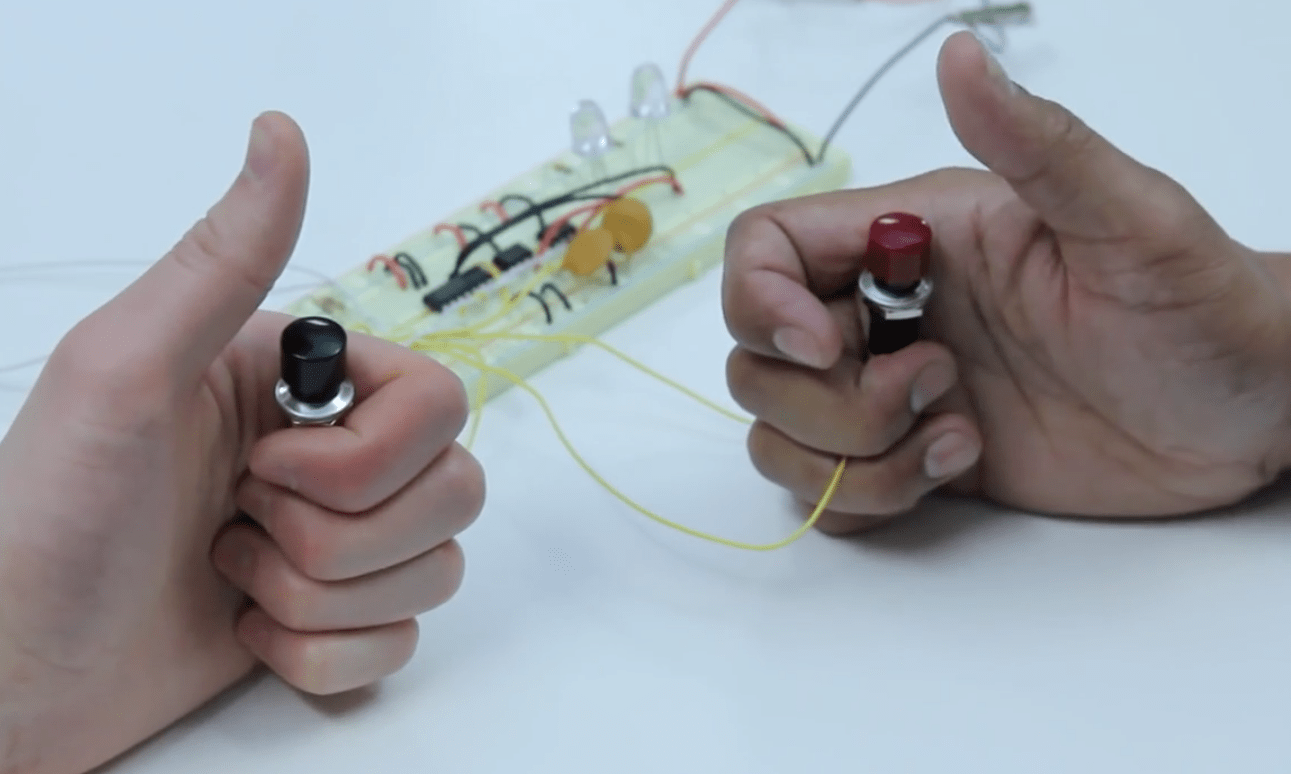Weekend Projects – Game Show Buttons
Complete instructions for this Weekend Project can be found at http://makeprojects.com/Project/Game-Show-Buttons/1916.
In this project, taken from Charles Platt’s book Make: Electronics, we’re going to breadboard a fairly complex circuit using 555 timers and an “OR” logic gate.
Using these and some other, common components, we’ll create game show buttons. When one button is pressed, it automatically locks out the other one until the quizmaster flips a reset switch.
An “OR gate” is one of several types of basic logic gates. The logic of ORs are, as the name suggests, if input A or B is true (on), output X is true (on); thus, in this design, if either player presses their button, the circuit will go true (on), locking out the other push button, and can only be reset via the toggle switch. This circuit is ideal for two-person quiz contests!
“I’ll take ‘Cool Projects’ for 100, Alex!”








